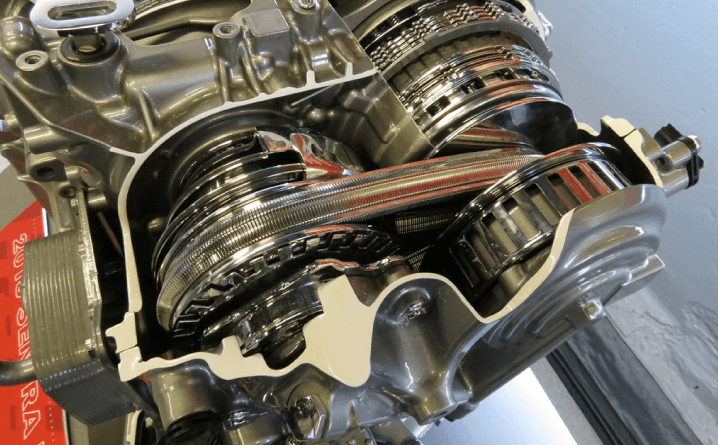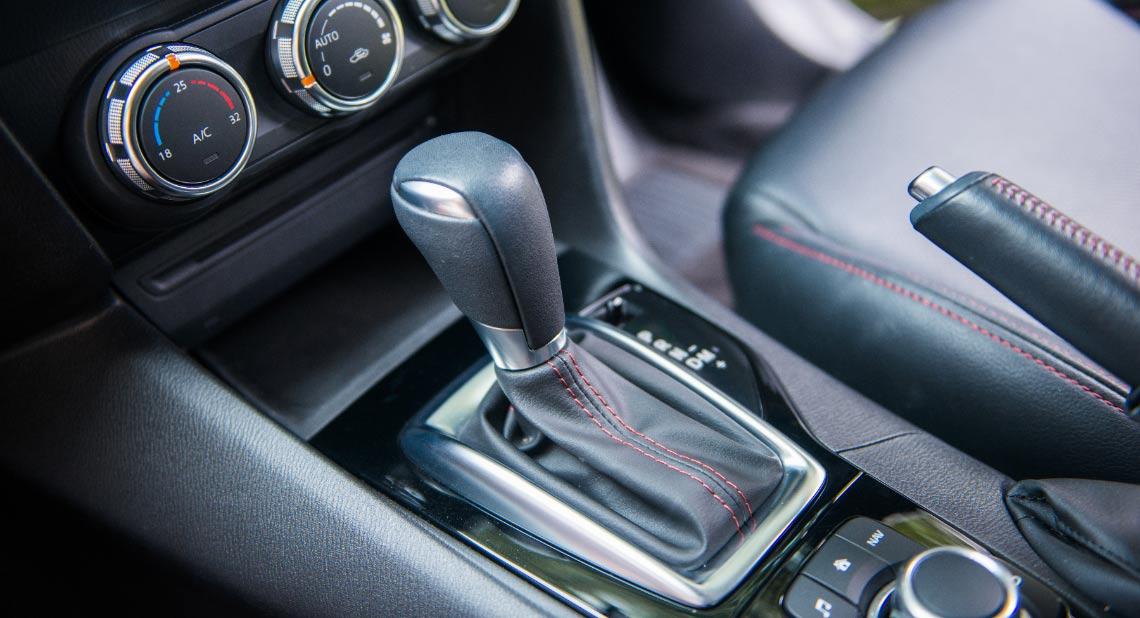The transmission of a car is an assembly of gears and shafts that work together to transfer the engine power to the drive axle. It converts the engine speed and torque in a way so that the wheels can use that power and make the car run. A continuously variable transmission (CVT) combines the functions of both manual and automatic versions. Unlike other transmission systems, it does not use traditional gears. Instead, a strong metal belt and two pulleys run the CVT.
Contents
What Is CVT Transmission?
Also known as single-speed or shiftless transmission, a CVT is a variation of automatic transmission that offers a countless range of effective gear ratios. This unique feature makes it different from other transmission systems because they have a fixed number of gear ratios.
The belt-driven design ensures around 88% of output efficiency. Still less productive than a manual transmission, but it allows the engine to run at the most efficient speeds for a wide range of output speeds.
Industrial applications were the only fields to utilize the CVTs in the earlier days. However, some automakers, including Honda, Nissan, Ford, and Audi, introduced the technology into their automobiles. Currently, various brands have several lines of CVT cars.

SEE MORE
Some popular models are Subaru Outback, Forester, WRX, Toyota Passo, Prius, Camry, Nissan Sentra, Rogue, Murano, Honda City, Freed, HR-V, and many others.
How Does A CVT Work?
The specialty of a continuously variable transmission is that it has no physical gear at all. Instead, it uses a pulley system and a belt to exploit the transition between a vast number of gear ratios.
The system has a few components: a driving pulley controlled by a hydraulic cylinder, another driving pulley that detects the mechanical torque, a metal/rubber belt, and a couple of microprocessors and sensors. All these parts work together to create a balance between the engine speed and torque and the drive wheel’s speed and torque.
Between the maximum and minimum values, there are a huge number of gear ratios that the CVT can move into. How does it exploit the unlimited gear ratios? Each of the pulleys has two parts: one half can move and the other half is fixed. When the moving halves of both pulleys come close to each other, the belt that runs between them goes higher. Such change of position expands the diameter of the pulleys or changes the dimensions between the two parts of a pulley. This alteration of the proportions helps a CVT to get those numerous gear ratios.
As you can see, the working mechanism of CVTs differs from traditional manual and automatic transmissions. There is no way you will get to exploit more than 5 or 6 gears in those transmission systems. Their ratio is changed systematically only by shifting gears. CVTs have a clear advantage over them in this regard but many people still like an auto or manual car for the other benefits they offer.
In earlier models, drivers used to complain about the slipping feel of the CVT. Automakers these days tweak the design so that drivers get a faux-shift feel. It increases the engine sound at the time of acceleration but makes handling much smoother.
Pros And Cons Of Continuously Variable Transmission
The ability of seamless transition through an unlimited gear ratio gives CVT cars some certain advantages over vehicles with a traditional transmission system. Similarly, they have a few downsides too. If you are planning to buy one, it would be better to know their positive and negative sides.
Pros of CVT Transmissions
A CVT makes sure that the wheels get the maximum power delivery from the engine. This becomes possible because the transmission is always in the right gear. It keeps the engine speed optimized for the optimal power band that helps the car speed up faster in certain conditions.

CVT shifts smoothly from one gear to another and its lighter construction takes some load off of the car’s powertrain, boosting the fuel economy. Also, the transmission functions with a few components, which means a lower chance of going awry and a less complicated repair process.
Cons Of CVT Transmission
Quiet driving is something you have to say goodbye if the car has CVT. Accelerating the transmission causes the engine to rev wildly and create extra noise.
The transmission is a practical choice but not the most fun to drive around. A continuously variable transmission is incapable of handling high-torque applications. It means that the cars with this system will never feel sporty.
Many people are drawn to the fuel economy of CVTs and their upkeep costs are also pretty inexpensive. However, the parts used in the system are quite expensive. If something goes wrong, you have to deal with hefty repair costs.




I need to print your articles and read quietly
Hi,
I have a 2011 Toyota Ractis with a CVT.I have been meaning to change my CVT oil but the toyota dealership in my country has been out of stock for a while.A week ago the car started really grabbing as soon as i let my foot off the gad peddle and there is also a burning smell when i hit 100km/hr.Should i go ahead and change the oil or does this mean i need a new transmission.